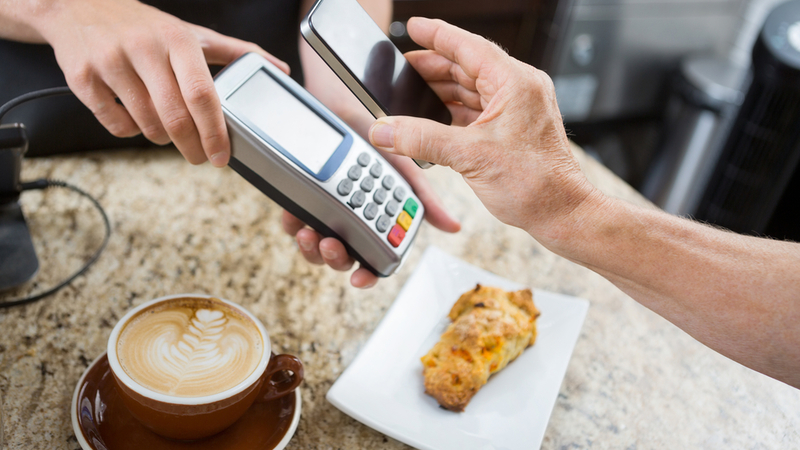Making Payments with your iPhone or Android Device
Our smartphones have already taken over a great many functions that would’ve previously been carried out by other devices. They can make calculations; create and prompt calendar reminders; set alarms or record timers; capture photographs, and a whole lot more. If you’re constantly looking for ways to assimilate all your day-to-day tasks into one place, then it makes sense to set up contactless payments through your iPhone or Android, if you haven’t already done so.
The benefits of mobile payments
One of the obvious benefits of using your phone is that you can carry less. Whereas you may have to carry multiple different credit and debit cards on a shopping trip or holiday, your phone’s digital wallet can store a vast number in one place. It can even handle loyalty cards, such as Starbucks or Tesco’s Clubcard. Of course, you might still need cash from time to time, but this means no more carrying around a thick wallet on every single shopping trip if you don’t have to.
What’s more, your bank limits speedy contactless debit and credit card payments to £30, since they do not require a PIN number. Aside from small purchases, most shopping trips, including the weekly food shop, will likely come to more than this. However, your phone can be used to make transactions without an upper limit, much like you would do using Chip and PIN card payments. This is one major advantage in having your phone with you and enjoying the speed of contactless payments, without having to revert to the slower process of PIN-authorised transactions when spending above the £30 limit.
Once one or more cards have been assigned to work with your device – we’ll get onto that next – then you will be able to make purchases simply by tapping your phone against the credit and debit card reader within a store, providing that the shop supports contactless payments.
Setting up Android Pay
Android Pay has been around since 2015 and is simple to set up through your Android device. If you've already associated debit or credit cards with your Google Play account, then these will be automatically synchronised to Android Pay if you log into this app using the same Google account. Some banks might want you to authorise the synchronisation, first.
If you haven’t previously associated cards with your Google Play account, or you want to add additional or replacement cards, then you can tap on the 'Add Card' option within Android Pay once the app has been launched. The application will allow you to enter your card details manually, however it also supports a feature that allows you to snap a picture of your card with the device’s camera, from which the app is able to capture and lift the card information directly.
Once up and running, you’ll have to ensure that your Android device has the lock screen enabled, otherwise the Android Pay functionality won’t be available to use.
Setting up Apple Pay
To set up Apple Pay on your iPhone, you’ll need to first add at least one card to your phone’s digital wallet. This process can be done through the app that is literally named ‘Wallet’; since this is one of the default apps that Apple do not allow you to delete, you should be able to find it easily by having a look at your home screen. As your iPhone won’t automatically synchronise cards from elsewhere, the process is a little longer:
- Open your Wallet application and tap the cross symbol to add a new card;
- Follow the on-screen prompts to add a new debit or credit card. If you opt to copy across a card that’s used elsewhere on your device, you’ll still need to input the 3 digit CVC code;
- Tap on 'Next' and allow your bank to remotely authorise the process. At this point, some banks may require you to call and speak to them, before the card can be authorised or used.
Once you’ve added a card or cards, you won’t need to open the Wallet app each time to use them. By double-pressing the home button, you’ll be presented with all the cards available to you within your digital wallet, allowing you to make a payment or scan a loyalty barcode. First, you’ll need to authenticate yourself using your fingerprint or passcode. For iPhone X users, the process is slightly different; simply press the side button twice, then allow Face ID to scan your face.
Are They Safe?
One of the biggest concerns for people when moving to new payment methods is, are they secure? Check out our article on, Are Mobile Payment Apps Safe?
Speak to us for assistance
If you would like any guidance on setting up one of these payment methods, or want to understand more about the security behind these types of payments, then you can give us a call on 0808 123 2820, and we will happily discuss the topic with you in more depth.



Recent Comments